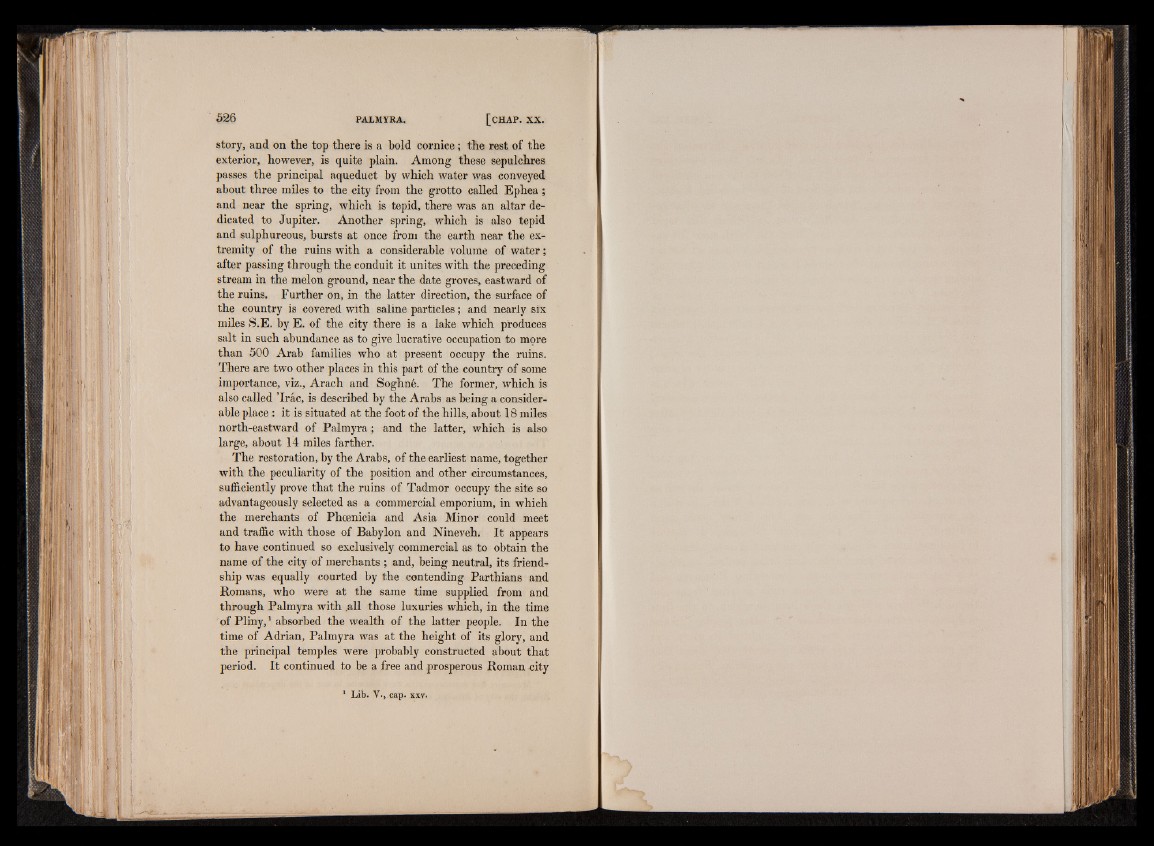
story, and on the top there is a bold cornice; the rest of the
exterior, however, is quite plain. Among these sepulchres
passes the principal aqueduct by which water was conveyed
about three miles to the city from the grotto called Ephea ;
and near the spring, which is tepid, there was an altar dedicated
to Jupiter. Another spring, which is also tepid
and sulphureous, bursts at once from the earth near the extremity
of the ruins with a considerable volume of water;
after passing through the conduit it unites with the preceding
stream in the melon ground, near the date groves, eastward of
the ruins. Further on, in the latter direction, the surface of
the country is covered with saline particles; and nearly six
miles S.E. by E. of the city there is a lake which produces
salt in such abundance as to give lucrative occupation to more
than 500 Arab families who at present occupy the ruins.
There are two other places in this part of the country of some
importance, viz., Arach and Soghne. The former, which is
also called Trac, is described by the Arabs as being a considerable
place : it is situated at the foot of the hills, about 18 miles
north-eastward of Palmyra; and the latter, which is also
large, about 14 miles farther.
The restoration, by the Arabs, of the earliest name, together
with the peculiarity of the position and other circumstances,
sufficiently prove that the ruins of Tadmor occupy the site so
advantageously selected as a commercial emporium, in which
the merchants of Phoenicia and Asia Minor could meet
and traffic with those of Babylon and Nineveh. It appears
to have continued so exclusively commercial as to obtain the
name of the city of merchants ; and, being neutral, its friendship
was equally courted by the contending Parthians and
Romans, who were at the same time supplied from and
through Palmyra with .all those luxuries which, in the time
of Pliny,1 absorbed the wealth of the latter people. In the
time of Adrian, Palmyra was at the height of its glory, and
the principal temples were probably constructed about that
period. It continued to be a free and prosperous Roman eity